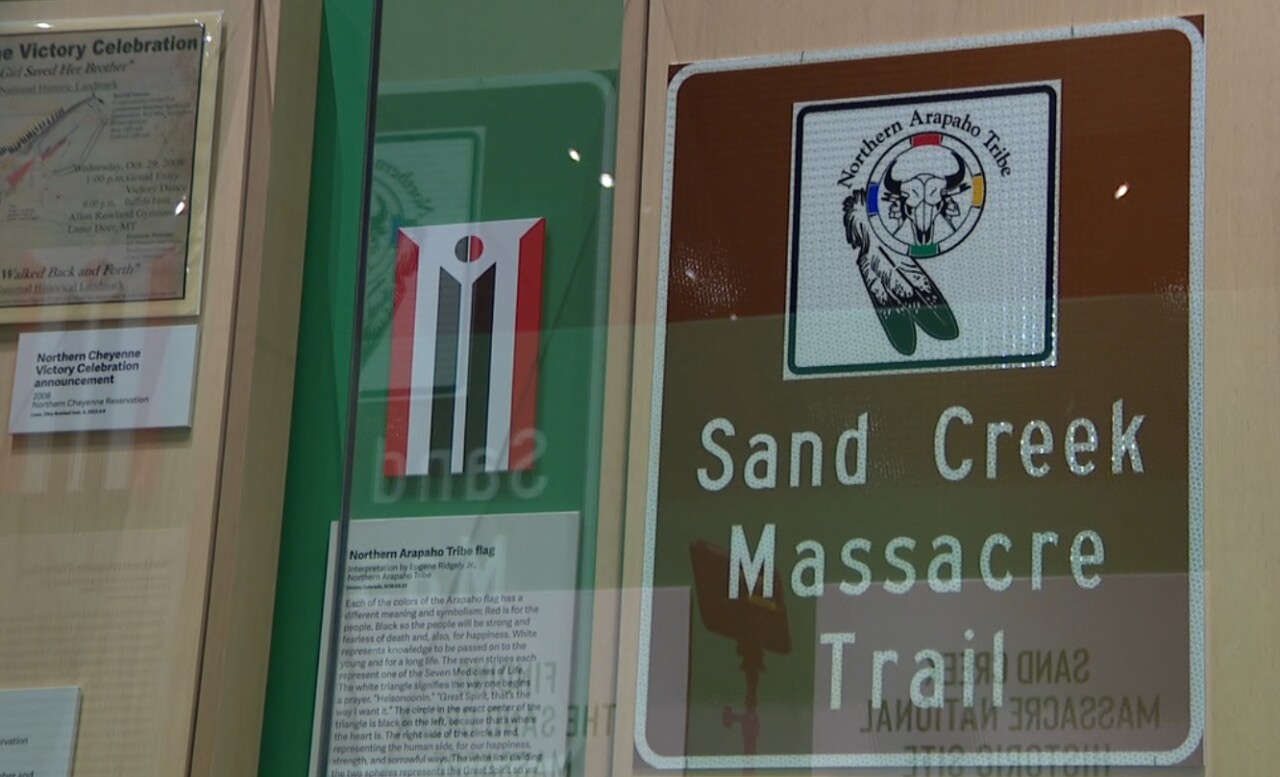DENVER — As many Americans celebrate Thanksgiving and the coming of winter holidays, the month of November is also a time to reflect on Native American history.
“Fall is a time of Thanksgiving for Native Americans because we are going into the winter with what we need,” said Conrad Fisher, a Northern Cheyenne descendant from the original inhabitants of Colorado. “We're not all about beads and feathers when it comes to Thanksgiving, that's really a stereotype."
While many diverse tribal groups have historically celebrated harvest festivals ahead of winter, Fisher said the Thanksgiving narrative of pilgrims sitting down for a feast with Indigenous people doesn’t capture the full story.
“We've endured so much trauma, genocide,” he said. “This is a very difficult time for a lot of folks, particularly the descendants of the Sand Creek Massacre.”
Fisher’s ancestors survived the deadliest day in Colorado history on November 29, 1864.

Denver
Sand Creek Massacre exhibit opens at History Colorado
Dale Hamilton Sr., also a descendant of the massacre’s survivors, said remembering what happened at Sand Creek “always gets emotional.”
“We're still dealing with the historical trauma. We're still healing,” said Hamilton, who serves on the board of the Sand Creek Massacre Foundation alongside Fisher.
Almost 160 years ago, hundreds of U.S. volunteer soldiers attacked a village of nearly 750 Cheyenne and Arapaho people camped along the banks of Big Sandy Creek in southeastern Colorado territory.
Although the Cheyenne and Arapaho believed they were under the protection of the U.S. Army on their assigned ratified treaty lands, the troops killed roughly 230 people — most of them women, children and the elderly.
“We had a white flag that signaled that we were a peaceful tribe. But in all that, that was never honored,” Fisher said.
It was a betrayal that fuels persistent collective trauma, Fisher said.
“The subsequent events that occurred, even during modern times,” such as being relegated to reservations and sent to boarding schools, created a “trauma that has never gone away,” Fisher said.

Politics
US to expand Sand Creek Massacre historic site by 3K+ acres
“We've had to deal with centuries of oppression, racism,” Hamilton said. “Within our family, we just kind of keep those memories alive.”
But they worry that much of this history is not accurately taught to the next generations in school.
Donna Chrisjohn, a Sičháŋǧu Lakota who serves on the Denver American Indian Commission, agrees.
“I've been presenting the Indigenous perspective to schools and organizations for over 45 years of my life,” Chrisjohn said.
"Our children deserve the truth," she said. “It's not a good story to hear about mass murder and the burning of bodies... It's a heartfelt and sad moment for the state of Colorado to realize the truth of what human beings are capable of.”
But Chrisjohn believes children, such as her own, should learn those dark truths from trusted institutions like their schools, including the realities for Native Americans today.
"The best part of the story is that we survived. The best part of the story is that we get to sit and talk about how resilient we are, and how we can do better,” she said.
More than 5,500 Native Americans from nearly 400 different tribal nations live in the Denver metro area. Across Colorado, almost 75,000 people identify as American Indian or Alaska Native.
“We're not dead and gone. We're not a caricature. We're not a stereotype. We are living breathing people that deserve respect on our own land,” Chrisjohn said.




